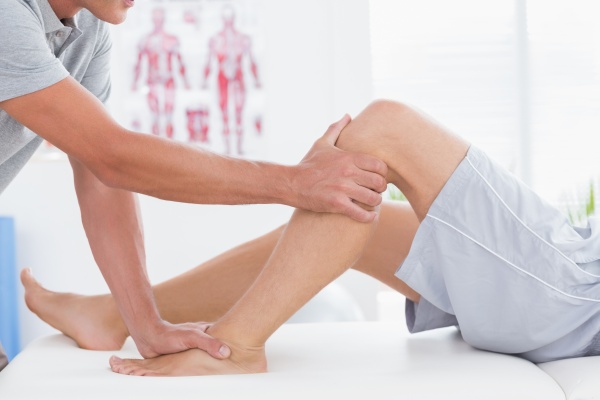How do you close my knee incision?

This article is intended to give a brief overview of how the soft tissues of the knee are closed after a knee replacement surgery. The same principles apply to closure of other surgical incisions and this is very similar to the hip and other joints.
Because the skin is the body’s first line of defense against infection, it is important to utilize adequate skin closure techniques after total joint replacement surgeries. Not only does skin closure serve a cosmetic purpose, but it also lends itself to the patient’s overall rehabilitation following his or her surgery. The skin is an important barrier to keep bacteria and other microorganisms away from the newly replaced joint.
The surgical incision is closed in multiple layers, starting with the deeper layers (muscles and tendons), and ending with the most superficial layer (skin). The deep sutures are usually made of absorbable materials, which typically dissolve in about 4-6 months. All layers are closed in a "water-tight" fashion to avoid any drainage with regards to the wound. Wounds that break down or chronically drain are at risk for developing infection. Preventing infection is one of our top priorities to ensure the patient has a favorable outcome.
Regarding closure of the skin, there are a few different methods utilized by our APPs (advanced practice providers). One method is the ZipLine device. This device uses adhesive strips on either side of the incision, and plastic straps are pulled together to bring the skin together. This device is very similar to regular zip ties which are used for non-surgical applications. The device is flexible and allows for the knee to bend fully without being pulled off. It stays on until the 2 week post-operative visit, when it is gently removed from the skin. Another method used is called a subcuticular suture. This is an absorbable suture that goes in the layer directly beneath the skin to pull the wound edges together. The incision is then reinforced with steri-strips to ensure a water-tight seal. This type of suture goes beneath the skin and dissolves over time, thus it will not have to be removed at the post-operative visit. While we attempt to close most incisions with the ZipLine device and subcuticular suture, sometimes it is necessary to use staples to close the skin. This is typically the method used when there is a large amount of tension in the layers underneath the skin and there is concern for potential wound complications. These are easily removed with a staple remover device at the 2 week post-op appointment. As with many things in surgery, we make decisions about closure during the procedure. Our practice strongly favors this type of personalized care over one-size-fits-all traetment.
Ultimately, skin closure plays a significant role in the patient’s overall healing process from total joint replacement surgery. By employing a variety of different techniques, we can help our patients recover from their procedures, reduce their risk of infection and get back to their desired activities. Typically, the patient is able to shower immediately after surgery with a sealed dressing. Showers continue after the dressing is removed and once the wound is fully sealed (usually about 1 month) the patient is able to resume the use of a pool or tub.
Check out what others are saying about our services on Yelp: Knee Replacement in Mobil, Al.
Recent Posts
PRP is a form of regenerative medicine that uses a person's own blood to promote healing and relieve pain. The blood is drawn from the patient and then placed in a centrifuge to separate the platelets, which are rich in growth factors. The concentrated platelets are then injected back into the patient's body at the…
Due to the knee's large articulating surface and weight-bearing properties, it is no surprise that it is one of the most commonly injured joints. In fact, in the United States alone, knee pain accounts for over 1 million ER visits and more than 1.9 million primary care outpatient visits each year. The natural aging process causes…
Thousands of people undergo knee replacement per year in the United States. The doctor will replace the degenerating joint surfaces and bone pieces with metal and plastic implants for the process. The procedure is often recommended for those whose mobility or daily functions have been impeded due to knee issues. If you have been scheduled…
Every year, more than 600,000 Americans undergo knee replacements. By 2030, that number is expected to increase by nearly 200%. Knee replacement, also called knee arthroplasty, is a relatively common, cost-effective, and elective surgery for people suffering from knee osteoarthritis, rheumatoid arthritis, or a knee injury.Knee arthroplasty can give people a new lease on life…


